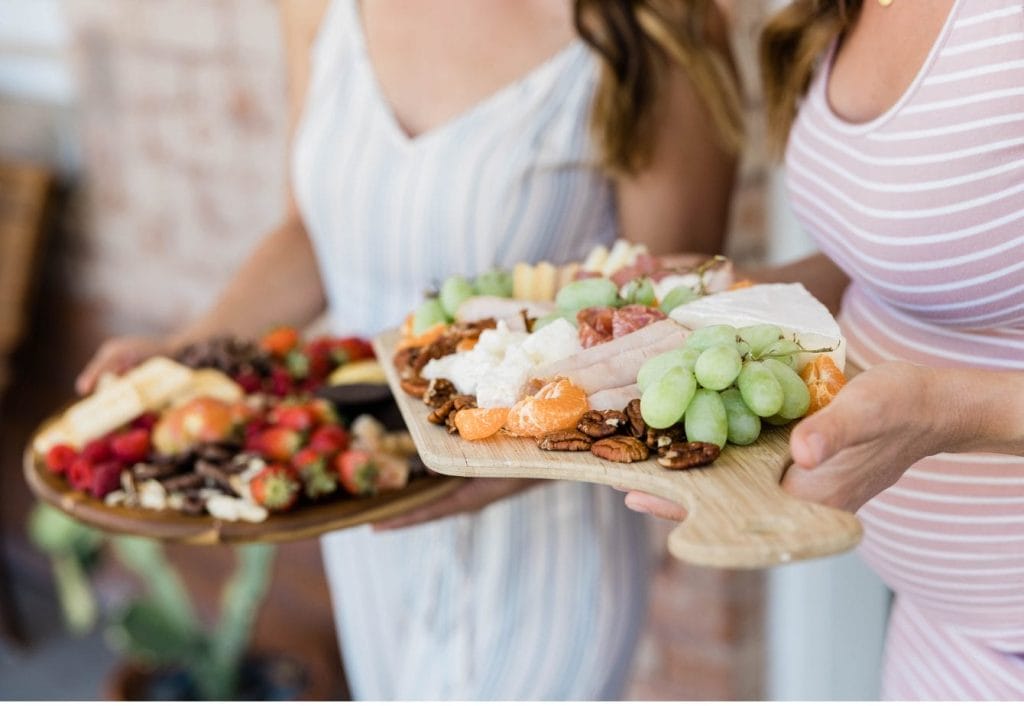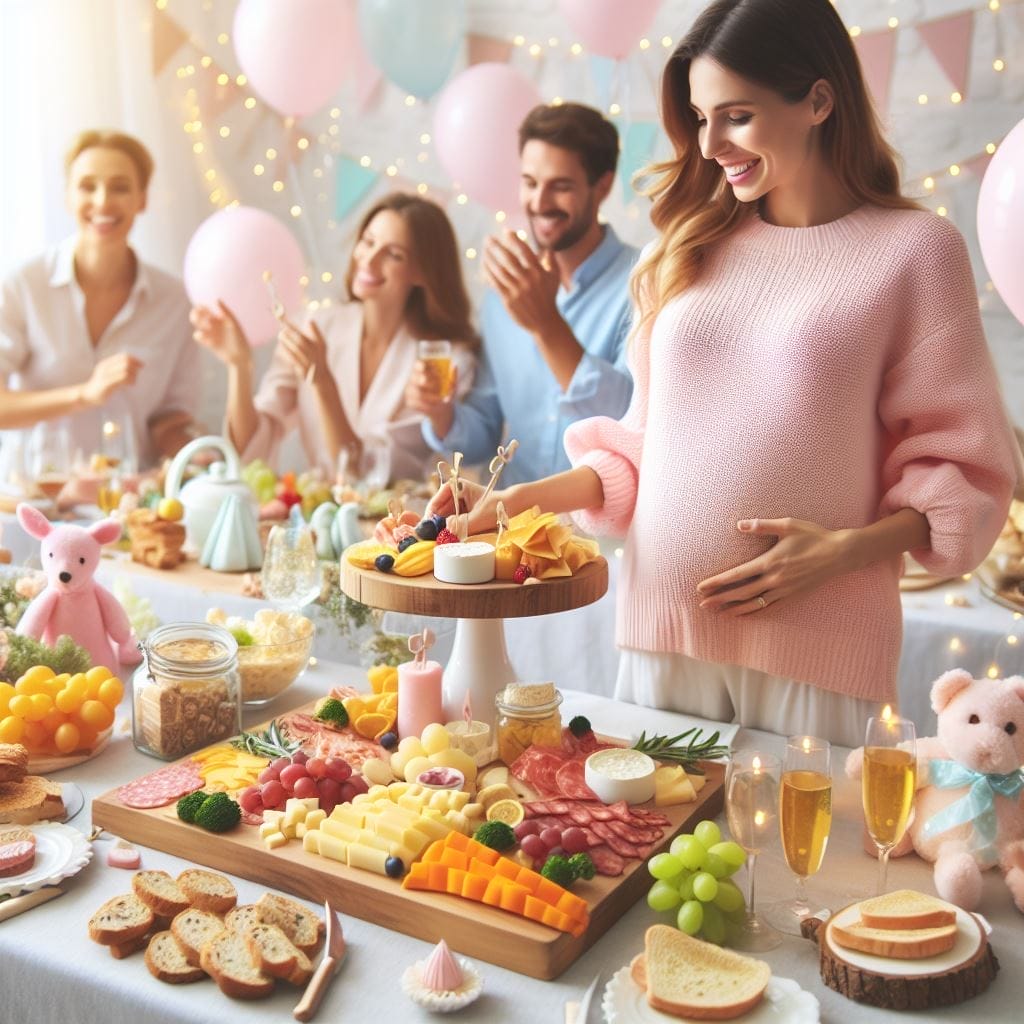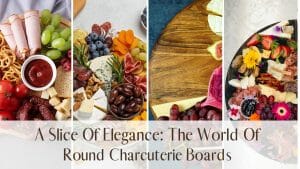In recent years, charcuterie boards have gained popularity not only for their culinary appeal but also as a delightful centerpiece for social gatherings. However, for expectant mothers, the enjoyment of charcuterie comes with heightened considerations for food safety, particularly during pregnancy. Creating a pregnancy safe charcuterie board involves careful selection and preparation to ensure that every element is not only delicious but also free from potential risks that could affect maternal and fetal health. From choosing the right meats and cheeses to incorporating safe and nutritious accompaniments, moms-to-be can indulge in charcuterie while prioritizing their health and the well-being of their unborn child.
TIP: Learn charcuterie fast from the best. Gain insights from a half-million strong community and impress at your next event. Click to join us >>
Table of Contents [CLICK HERE TO OPEN]
- What is Charcuterie and Why is Safety Important During Pregnancy?
- Safe Meats for Pregnancy Safe Charcuterie Boards
- Safe Cheeses for Pregnancy Safe Charcuterie Boards
- Creative and Safe Charcuterie Board Ideas
- Foods to Avoid on a Pregnancy Safe Charcuterie Board
- General Pregnancy Diet and Food Safety Tips
- Healthy Eating and Nutrition for Pregnancy
- Conclusion
- Frequently Asked Questions
What is Charcuterie and Why is Safety Important During Pregnancy?
Understanding Charcuterie:
Charcuterie traditionally refers to a selection of cured meats and accompaniments such as cheeses, fruits, and nuts, artfully arranged on a board. It’s loved for its variety and the way it brings people together around a shared platter of tasty bites.
Why Safety Matters:
During pregnancy, the immune system is slightly suppressed, making expectant mothers more susceptible to foodborne illnesses like listeria and toxoplasmosis. These infections can have serious consequences for both mother and baby. Therefore, understanding and following pregnancy food safety guidelines is crucial to avoid potential risks.

Safe Meats for Pregnancy Safe Charcuterie Boards
When it comes to charcuterie, meats are often a central feature. However, not all meats are safe for pregnant women. It’s important to choose cooked and properly handled meats to avoid any health risks.
List of Pregnancy-Safe Meats:
- Cooked Ham: Opt for fully cooked, nitrate-free ham slices. This eliminates the risk of consuming harmful bacteria that can be present in cured or raw meats.
- Roasted Turkey or Chicken: Ensure these are well-cooked and free from any pinkness. These lean meats are a great source of protein and can be easily sliced and arranged on your charcuterie board.
- Cooked Beef Slices: Roast beef, as long as it is thoroughly cooked, is safe. Avoid rare or medium-rare beef.
- Nitrate-Free Sausages: Look for sausages specifically labeled as nitrate-free and fully cooked. Avoid sausages that are dry-cured or fermented as they may contain harmful bacteria.
Preparation and Storage Tips:
- Safe Handling Practices: Always wash your hands before handling food. Use separate cutting boards for meats and other items to prevent cross-contamination.
- Proper Storage: Store meats at the right temperature, typically in the refrigerator at or below 40°F (4°C). Consume them within a few days of opening to ensure they remain fresh and safe to eat.
Safe Cheeses for Pregnancy Safe Charcuterie Boards
Cheeses are another staple of charcuterie boards. During pregnancy, it’s important to select cheeses that are pasteurized and free from harmful bacteria. Pasteurization kills potentially harmful bacteria, making these cheeses safe for expectant mothers.
List of Pregnancy-Safe Cheeses:
- Hard Cheeses: Cheddar, Parmesan, and Swiss are excellent choices. These cheeses are typically low in moisture, which makes it difficult for bacteria to grow.
- Pasteurized Soft Cheeses: Mozzarella, cream cheese, and ricotta are safe as long as they are made from pasteurized milk. These cheeses can add a creamy texture and rich flavor to your board.
- Safe Blue Cheeses: Only choose blue cheeses that are clearly labeled as pasteurized. Even then, consume in moderation and ensure they are fresh.
Pairing Ideas:
- Cheddar: Pair with apple slices for a sweet and savory combination.
- Mozzarella: Goes well with cherry tomatoes and basil for a mini Caprese bite.
- Parmesan: Enjoy with pear slices and a drizzle of honey for a delightful blend of sweet and salty flavors.

Creative and Safe Charcuterie Board Ideas
Building a Pregnancy-Safe Charcuterie Board:
Creating a charcuterie board is an art. Start by selecting a variety of safe meats and cheeses, then add complementary fruits, vegetables, and nuts. The key is to ensure that all components are safe and nutritious.
Incorporating Fruits, Vegetables, and Nuts:
- Safe Fruits: Grapes, apple slices, strawberries, and blueberries are delicious and nutritious. These fruits add color and sweetness to your board, and they’re packed with vitamins and antioxidants.
- Safe Vegetables: Cucumber slices, bell pepper strips, and cherry tomatoes add color and crunch. They are also rich in essential nutrients like vitamins A and C.
- Nuts and Seeds: Almonds, walnuts, and pumpkin seeds are excellent sources of healthy fats and protein. Make sure they are unsalted and fresh to maintain their nutritional value.

Foods to Avoid on a Pregnancy Safe Charcuterie Board
Unsafe Meats and Cheeses:
- Raw or Undercooked Meats: Avoid salami, prosciutto, and other cured meats unless they are cooked. These meats can harbor harmful bacteria that pose risks during pregnancy.
- Unpasteurized Cheeses: Steer clear of cheeses like Brie, Camembert, and certain blue cheeses unless labeled as pasteurized. Unpasteurized cheeses can contain listeria, a bacteria harmful to pregnant women.
Other Foods to Avoid:
- Raw Seafood: Sushi, sashimi, and smoked salmon can be risky due to potential bacteria and parasites.
- Unwashed Fruits and Vegetables: Always wash fresh produce thoroughly to remove any bacteria or pesticides.
- High Mercury Foods: Certain fish like king mackerel, shark, and tilefish should be avoided due to high mercury levels, which can be harmful to fetal development.
General Pregnancy Diet and Food Safety Tips
Pregnancy comes with a set of dietary guidelines to ensure the health and safety of both mother and baby. It’s essential to avoid certain foods and follow proper food safety practices.
General Food Safety Guidelines:
- Washing Hands and Surfaces: Always wash your hands before handling food and clean surfaces regularly to prevent contamination.
- Cooking Foods to Proper Temperatures: Use a food thermometer to ensure meats are cooked to safe temperatures, eliminating harmful bacteria.
- Avoiding Cross-Contamination: Use separate cutting boards and utensils for raw meats and other foods to prevent the spread of bacteria.
Tips for Eating Out and Ordering Takeout:
- When dining out, choose restaurants known for good hygiene practices.
- Ask about ingredients and preparation methods to ensure dishes are safe.
- Opt for well-cooked dishes and avoid raw or undercooked items.
Healthy Eating and Nutrition for Pregnancy
A balanced diet is crucial during pregnancy to provide the necessary nutrients for both mother and baby. Focus on incorporating a variety of foods to meet nutritional needs.
Nutritious Snack and Meal Ideas:
- Snacks: Greek yogurt with berries, whole-grain crackers with hummus, and nuts with dried fruit provide a mix of protein, fiber, and healthy fats.
- Meals: Grilled chicken with quinoa and steamed vegetables, lentil soup with whole-grain bread, and salmon with a side of leafy greens ensure a balanced intake of essential nutrients.
Essential Nutrients:
- Folic Acid: Found in leafy greens, beans, and fortified cereals, it’s vital for preventing birth defects.
- Iron: Necessary for oxygen transport, found in lean meats, spinach, and lentils.
- Calcium: Important for bone development, available in dairy products, fortified plant milks, and leafy greens.

Wrapping It Up
Creating a pregnancy-safe charcuterie board involves careful selection of safe meats, cheeses, and other elements while adhering to food safety guidelines. By following these tips, expectant mothers can enjoy delicious and nutritious charcuterie boards without worry. Don’t let dietary restrictions take the joy out of eating during pregnancy. With a little creativity and knowledge, it’s possible to enjoy safe and delightful charcuterie boards.
Frequently Asked Questions
What charcuterie is safe when pregnant?
During pregnancy, it is safe to consume charcuterie meats that are fully cooked and processed, such as cooked ham, roasted turkey or chicken, and nitrate-free sausages. Avoid consuming raw or undercooked meats like salami or prosciutto, which may harbor harmful bacteria.
Can you eat salami and Prosciutto when pregnant?
It is not recommended to eat salami and prosciutto during pregnancy unless they are cooked thoroughly. These cured meats can potentially contain harmful bacteria like listeria, which poses risks to both maternal and fetal health if consumed raw or undercooked.
Can you have salami and cheese when pregnant?
Pregnant women should avoid consuming salami and certain soft cheeses like Brie or Camembert that are made from unpasteurized milk. Opt for pasteurized cheeses such as Cheddar or mozzarella, which are safer options during pregnancy.
Is raw cheese safe during pregnancy?
Raw cheeses made from unpasteurized milk should be avoided during pregnancy due to the risk of foodborne illnesses such as listeriosis. Choose cheeses that are labeled as pasteurized to reduce the risk of exposure to harmful bacteria and ensure food safety for both the mother and the baby.
Share Your Creations:
We’d love to see the charcuterie boards you create using our guide! Feel free to share your own creations in the comments or on social media, and tag us for a chance to be featured. And if you have any other ideas or tips for creating the perfect charcuterie board, we’d love to hear them.







